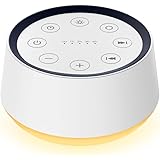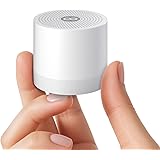Finding the Perfect Pillow for Side Sleepers: Your Guide to Restful Nights
Have you ever woken up with a persistent crick in your neck or a dull ache in your shoulders, despite having slept for hours? For many, this common scenario is not due to a bad night’s rest, but rather an unsupportive pillow that fails to align with their preferred sleeping position. As Dr. Michael Breus, the Sleep Doctor, and David Rubin, Director of Product Testing, eloquently discuss in the video above, side sleeping is the most popular choice among adults. However, maximizing its benefits and minimizing discomfort heavily relies on selecting the right pillow for side sleepers. This comprehensive guide is designed to delve deeper into why proper pillow selection is crucial and how to achieve truly restorative sleep.
Why Side Sleeping Matters: Health Benefits and Challenges
It is often observed that the majority of adults gravitate towards sleeping on their side, a preference that actually aligns with several health advantages. Firstly, improved airflow is typically promoted in this position, which is particularly beneficial for individuals who experience snoring or other sleep-related breathing difficulties. Secondly, specific research indicates that sleeping on the left side can lead to a reduction in the symptoms associated with acid reflux. Furthermore, alleviation of low back pain is frequently reported by those who sleep on either their left or right side. However, these substantial health benefits are often diminished if a supportive pillow is not utilized, leading to issues like pressure points and spinal misalignment.
The Core Elements of a Supportive Side Sleeper Pillow
For side sleepers, achieving optimal spinal alignment is paramount, as this helps to alleviate pressure on the shoulders, neck, and back. A truly supportive pillow is characterized by two critical factors: its loft and its firmness. These elements work in tandem to ensure your head and neck are adequately supported, maintaining the natural curvature of your spine throughout the night. Without careful consideration of these aspects, the benefits of side sleeping can easily be undermined by discomfort and pain.
1. Understanding Pillow Loft: The Right Height for Alignment
Loft refers to the actual height or thickness of a pillow when it is lying flat and uncompressed. For side sleepers, the correct loft is crucial because a significant gap exists between the head and the mattress surface, needing to be filled. An ideal pillow will snugly fit into this space, lifting the head away from the sleep surface and keeping it in line with the rest of the spine. Most side sleepers will find that at least a medium-loft pillow is required, and it is often preferred that high-loft models, which typically measure five or more inches thick, are used. Consideration of individual body type, specifically shoulder width, is also vital, as wider shoulders generally necessitate a higher loft.
2. Firmness Levels for Optimal Pressure Relief
Pillow firmness indicates how easily the pillow compresses under pressure. For side sleepers, a pillow that collapses too much under the weight of the head can cause the spine to fall out of alignment, leading to significant strain. Therefore, it is generally recommended that a medium to firm pillow is sought out, one that maintains its shape and provides consistent support throughout the night. It is observed that individuals with bigger frames often prefer a firmer pillow, as more support is needed, while those with smaller frames may do better with a slightly softer, yet still supportive, option. The ultimate goal is always a pillow that cradles the neck, lifts the head, and preserves the spine’s natural curve, regardless of body weight.
Exploring Pillow Materials and Designs for Side Sleepers
The market offers a wide array of pillow types, each providing distinct benefits in terms of loft and firmness, which are essential for a good night’s rest for side sleepers. The choice of material significantly impacts the pillow’s ability to maintain support and provide comfort. Understanding these options can greatly assist in finding your ideal side sleeper pillow.
Material Choices for Comfort and Support
Several materials are frequently chosen for their ability to provide the necessary support for side sleepers. Firstly, shredded memory foam is often selected for its contouring capabilities, allowing it to mold to the unique curves of the head and neck while providing adaptable loft. Secondly, polyfoam, a synthetic foam, offers a responsive feel and good support without the deep contouring of memory foam. Thirdly, latex, derived from rubber trees, is known for its excellent durability, bounce, and supportive nature, often maintaining its shape well over time. Lastly, down alternative fibers provide a soft, plush feel that can be combined with more supportive materials to achieve the perfect balance of comfort and firmness. These combinations are frequently found in many of the top-rated side sleeper pillows available today.
Specialized Pillows: Shaped and Adjustable Options
Beyond traditional shapes, certain pillow designs are specifically tailored to meet the unique needs of side sleepers. Consideration may be given to pillows that are shaped with cutouts designed to accommodate the shoulder, allowing the head to be cradled without pushing the shoulder uncomfortably forward. Moreover, adjustable pillows are increasingly popular, as they allow sleepers to add or remove fill (such as shredded foam or buckwheat hulls) for a truly personalized fit. This adjustability is particularly advantageous, as the ideal loft can be finely tuned to match individual preferences and body types. For those experiencing persistent neck pain, solid memory foam pillows, especially those incorporating built-in cervical rolls, can provide targeted support to relieve tightness and strain by promoting healthy alignment.
Addressing Neck Pain as a Side Sleeper
Neck pain is a common complaint among side sleepers, often exacerbated by an inadequate pillow that fails to provide the necessary support and alignment. Relief from neck pain is frequently sought through carefully selecting a pillow based on specific loft and firmness requirements. As mentioned, adjustable pillows are particularly helpful, as they permit the sleeper to customize the pillow’s height and density, ensuring the neck is kept in a neutral position. Additionally, pillows featuring cervical rolls or a contoured design are often recommended, as they are specifically engineered to support the natural curve of the neck, reducing strain on the cervical spine. Investing in a pillow designed with these features can make a significant difference in waking up feeling refreshed and pain-free.
Beyond the Pillow: Holistic Support for Side Sleepers
While selecting the correct side sleeper pillow is paramount, it is important to recognize that overall sleep comfort and spinal alignment are influenced by several factors. A holistic approach to sleep support often yields the best results, ensuring that all elements of your sleep environment work in harmony.
Enhancing Alignment with a Knee Pillow
Significant support can be gained by placing an extra pillow between your knees when side sleeping. This simple yet effective technique elevates the upper knee away from the lower one, ensuring that the hips and lumbar region are brought into a more neutral and aligned position. This action helps to release tension and pressure that can accumulate in the lower back and hips, contributing to a more comfortable and pain-free night. It is a small adjustment that can produce remarkable improvements in overall spinal alignment.
The Role of Your Mattress and Topper
A supportive mattress is considered essential as it works in concert with the right pillow to ensure a neutral spine. The mattress should provide ample contouring to support the body’s natural curves while preventing excessive sinking, which can disrupt alignment. However, if purchasing a completely new mattress is not an immediate option, investing in a high-quality mattress topper can be a viable alternative. These additional layers are able to modify the firmness level of your existing sleep surface, offering a more fine-tuned support. Toppers that feature extra memory foam are often found to provide superior conforming capabilities, which tends to greatly benefit side sleepers by alleviating pressure points and enhancing overall comfort. Selecting the ideal side sleeper pillow, along with these supplementary supports, contributes significantly to truly restorative sleep.








